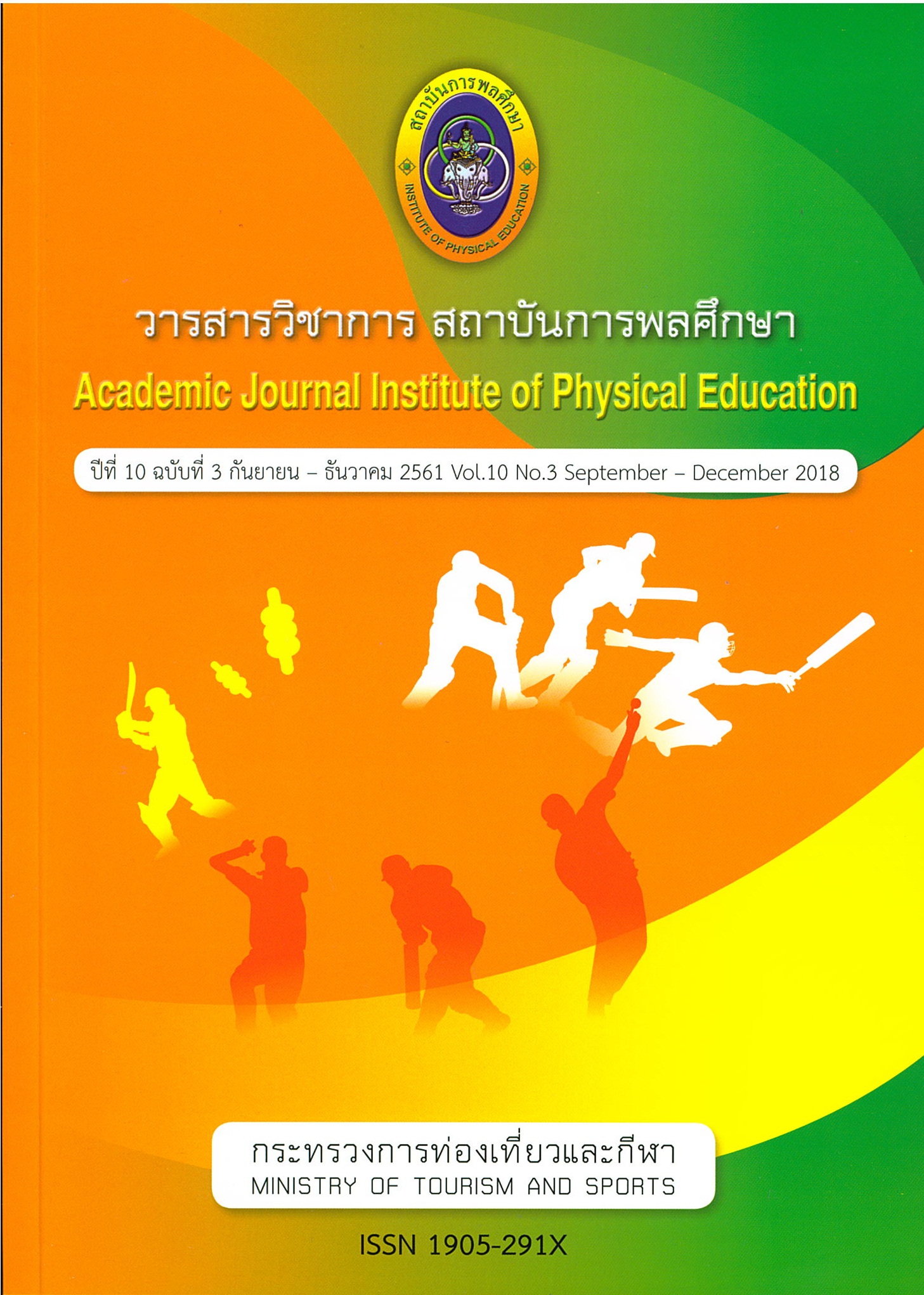Tourism Management on the Concept of Low Carbon Destination: A Case Study of Koh Mak Island, Trat Province
Main Article Content
Abstract
This qualitative researchon tourism management aimed to: 1) Study the sustainable tourism management, a case study of Koh Mak, Trat province, on the concept of the Low Carbon Destination; 2) Analyze the potential which is important for developing sustainable tourism management, a case study of Koh Mak, Trat province with in-depth interviews of the people involved in tourism, including using the method of participant observation and non-participant observation while operating tourism activities. The research found that the sustainable tourism management of Koh Mak, Trat province, on the concept of the Low Carbon Destination is an approach to help increase the potential of tourism management related to sustainability. It can also create a good conscience concerning the realization of the importance of natural resources and taking action to conserve them, as well as sustainable tourism management, rather than focusingon the income and benefits. That is to say, some useful and environmentally friendly technologies have been applied to use in sustainable tourism management. Specifically, this intends to apply tourism as a tool for natural resources and the environmental conservation, as well as maintain cultural traditions and lifestyle in the community. Moreover, it also gives the community an opportunity totake part intourism activities both directlyand indirectly inorder toimprove the quality of life in the community.
Article Details
The published article is a copyright of the Academic Journal of Thailand National Sports University. The passage appeared in each article in this academic journal is a perspective of each author which is not related to the journal. Each author is required to be responsible for all components of his/her own article. If there are any mistakes, each author must be responsible for those mistakes on his/her own.
References
กรมอุทยานแห่งชาติสัตว์ป่า และพันธุ์พืช. (2558). เกาะหมาก. สืบค้นเมื่อวันที่ 1 กุมภาพันธ์2559, จาก http://park.dnp.go.th/visitor/nationparkshow.php?PTA_CODE=9143
กรมการท่องเที่ยว. (2558). สถิตินักท่องเที่ยวที่ในราชอาณาจักร. กรุงเทพฯ: กรมการท่องเที่ยว.
กระทรวงการท่องเที่ยวและกีฬา. (2559). แผนพัฒนาการท่องเที่ยว 2558-2560. กรุงเทพฯ: กระทรวงการท่องเที่ยวและกีฬา.
ธนาคารเพื่อการส่งออกและนำเข้าของประเทศไทย. (2558).ธุรกิจบริการ ดาวรุ่ง ขับเคลื่อนเศรษฐกิจไทย. สืบค้นเมื่อวันที่11 มีนาคม 2560, จาก http://www.exim.go.th/doc/newsCenter/48189.pdf
มัชฌิมาอุดมศิลป์. (2556).แนวทางการการส่งเสริมการท่องเที่ยวเชิงนิเวศเพื่อการพัฒนาที่ยั่งยืนของชุมชนคลองโคลนจังหวัดสมุทรสงคราม. วารสารวิทยบริการ, 24(4), 135–149.
วรรณีพุทธาวุฒิไกร. (2546). ภูมิศาสตร์ประเทศไทย. กรุงเทพฯ: โอ.เอส. พริ้นติ้งเฮ้าส์.
ศรัญยา วรากุลวิทย์. (2558). อุตสาหกรรมการท่องเที่ยว. กรุงเทพฯ: โรงพิมพ์เฟื่องฟ้า พริ้นติ้ง.
สุวิมล ติรกานันท์. (2548). สถิติและการวิจัยทางการศึกษาเบื้องต้น. กรุงเทพฯ: สำนักพิมพ์มหาวิทยาลัยรามคำแหง.
สำนักงานจังหวัดตราด. (2559). งานข้อมูลสารสนเทศและการสื่อสาร.สืบค้นเมื่อวันที่17 มกราคม 2559, จาก: http://www.trat.go.th/data_gen/locate.html
องค์การบริหารการพัฒนาพื้นที่พิเศษเพื่อการท่องเที่ยวอย่างยั่งยืน. (2559). เกาะหมากสงบงาม จุดพัก (โลก) ร้อนแบบโลว์ คาร์บอน. เข้าถึงได้เมื่อวันที่ 11 มีนาคม 2559, จาก http://www.dasta.or.th/th/aboutus/item/1593-1593
อระนุช โกศลและโชคชัย สุทธาเวศ. (2556). การจัดการด้านการท่องเที่ยวอย่างยั่งยืนเพื่อรองรับการเข้าสู่ประชาคมเศรษฐกิจอาเซียน. วารสารการเมืองการปกครอง, 4(1), 220-232.
Huang Canand Deng Hongbing. (2011).The model of developing low-carbon tourism in the context of leisure economy. Energy Procedia, 5(2011), 1974-1978.
Wenjing Guo. (2014).Research on the Tourism Management and Development Mode Based on Low-Carbon Concept. Journal of Politics and Law, 7(2), 157-160.


